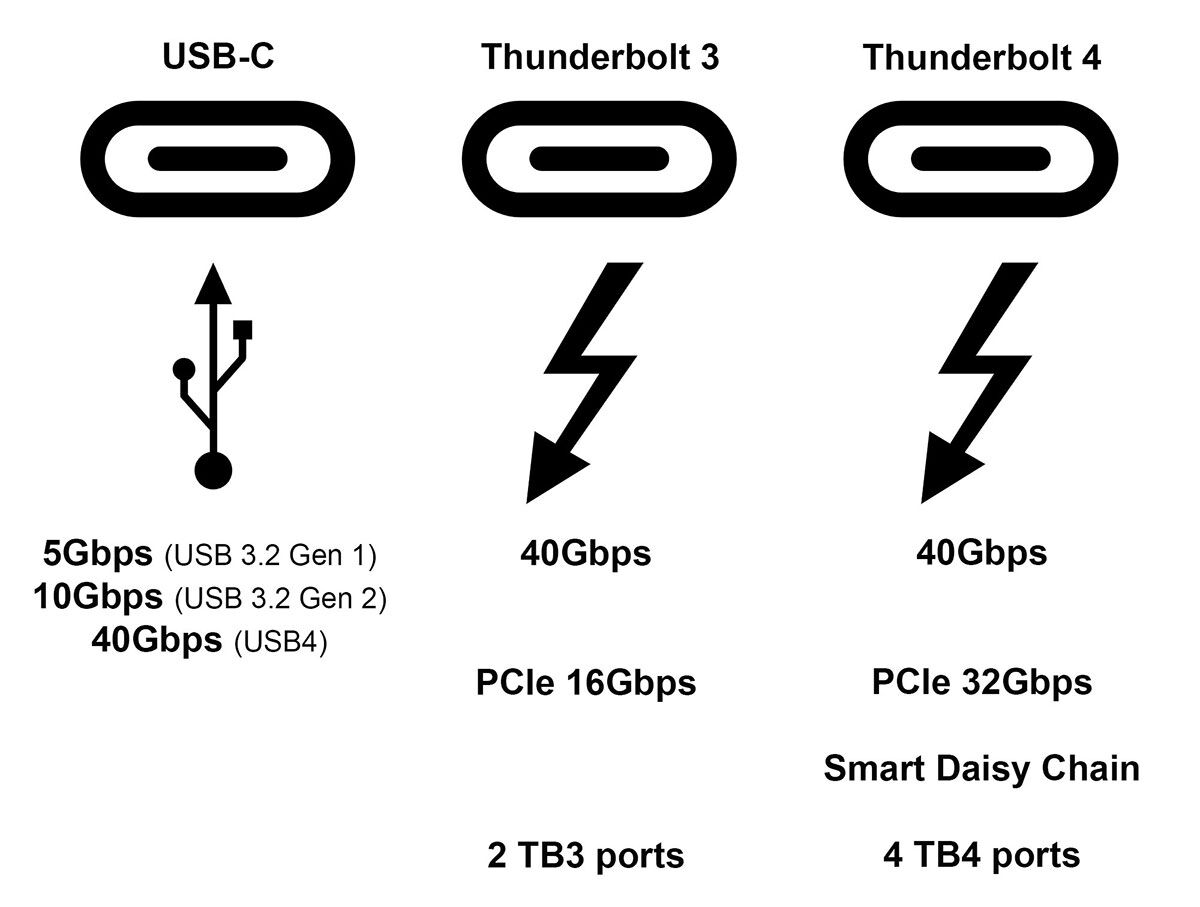Best Thunderbolt 3 & 4 and USB-C docking stations for MacBook, Pro and Air
Description
<body>
Plug your MacBook in and out of a multi-port docking station to swiftly add devices and external displays to your laptop. We tested a bunch to find the best Thunderbolt 3 and 4 and USB-C docks available to owners of the MacBook Air and MacBook Pro.
Thunderbolt 3, 4 or USB-C
The connectors all look the same, but there are significant differences, particularly on speed—with USB-C maxing out at 10Gbps (usually 5Gbps) compared to the 40Gbps of Thunderbolt 3 and 4. That extra bandwidth allows not just for faster data transfer but higher frame rates to external displays, plus some other smart benefits.
Of Apple’s current laptop range, the M1 and M2 MacBook Air and 13in M1 MacBook Pro feature two Thunderbolt 3 (TB3) ports, while the 14in and 16in M1 Pro or M1 Max MacBook Pro models come with three Thunderbolt 4 (TB4 ports.
Apple’s older 12in MacBook features one 5Gbps Gen 1 USB-C port, while the later Intel MacBook Air (2018 and later) and MacBook Pro (from 2016) boast either two or four 40Gbps Thunderbolt 3 ports.
If your MacBook is equipped with Thunderbolt 4, then you really should buy a TB4 dock if you need more ports than those 14/16in laptops already possess.
Buying a Thunderbolt 4 dock is a wise decision based on future-proofing even for owners of TB3 Macs as the standard is backwards compatible with TB3 and USB-C. That said, there are still some great—and often more affordable—TB3 docks available, and most Apple users won’t see much difference between TB3 and TB4—the Thunderbolt 4 standard was mainly about getting Windows laptops up to speed, although there are technical benefits for MacBook Pro users, such as smarter daisy-chaining and faster PCI hard-drive connections.
We have included some cheaper non-Thunderbolt USB-C docks. If you don’t require the ultimate bandwidth for the fastest data transfer and best screen frame rates or resolutions, a USB-C dock might suit your purposes and save you money.
Add external displays to your MacBook
If you use your laptop as your principal computer, you would do well to consider attaching at least one larger display to create a hybrid desktop/laptop setup (with a keyboard, mouse and printer all available via a single connection to your MacBook). You can turn that 13in laptop screen into an iMac-sized 27in or even larger monitor by adding an extra display—or connect two large screens to extend your screen across your whole desk.
If you want to connect more than one external display to your MacBook you’ll need a Thunderbolt dock, rather than a USB-C dock. Natively over USB-C, Macs can only connect to one external display in Extended mode (where the screen extends beyond what you can see on the laptop screen, as opposed to Mirrored mode that replicates exactly what you get on the laptop screen) but you’ll get two Extended mode screens over a Thunderbolt connection.
While Apple’s MacBooks featuring the company’s own M1 or M2 Silicon chip are super speedy compared to the models sporting Intel processors, early models come with an incredible limitation: they don’t support more than one external display in Extended Mode even via their Thunderbolt 3 ports. This means that when using any docking station, M1 MacBook users cannot extend their desktop over two or more displays, and will be limited to either dual Mirrored displays or one external display—although there are software workarounds and dedicated docks that allow you to add more than one external monitor to an M1 or M2 MacBook.
Thankfully, the superior M1 Pro and M1 Max MacBook Pro models can support multiple displays.
Do I need a docking station?
The new M1 Pro/Max MacBook Pro models boast a wider range of built-in ports, so lighter users might not need a docking station at all.
With three TB4 and an HDMI port, a MacBook with an M1 Max could connect to up to four external displays without the need for a dock, although such a power user would likely require extra Thunderbolt ports for other devices to make up for using all the laptop ports for multiple monitors.
These MacBooks also have an SD card reader. Although this is rated as UHS-II (312MBps), Apple has pegged it back at 250MBps, so for the fastest speeds (and a microSD slot if you need one), a dock will likely be a better choice for memory-card use if it is rated at UHS-II rather than UHS-I (104MBps).
MacBooks also lack wired Internet access via a Gigabit Ethernet port, so if you want to escape flaky Wi-Fi, buy a dock with at least Gigabit Ethernet, although you could add a Thunderbolt-to-Ethernet adapter if you have a spare TB port. Some later docks include faster 2.5Gb Ethernet but you’ll need a 2.5GbE router or other device to get the benefit. As Gigabit Ethernet’s speed is 1Gbps, a cheaper 5Gbps USB-C to Ethernet adapter will work just as well.
If you just need a few extra ports, a USB-C hub or Thunderbolt 4 hub might be your best choice. If you require a bunch of fast ports including Gigabit Ethernet, then look for a docking station that fulfils your needs.
USB-C and Thunderbolt speeds
 </figure>
</figure>Thunderbolt vs USB-C dock compatibility
Plain USB-C runs at either 5Gbps or 10Gbps, while Thunderbolt (TB3 and TB4) hits speeds of 40Gbps. You can hook up a Thunderbolt laptop to a USB-C dock but you won’t access the faster speeds unless you buy a true Thunderbolt dock.
• USB and Thunderbolt speeds explained
Docks with a Titan Ridge or Goshen Ridge chipset will work with both Thunderbolt and USB-C laptops. Other Thunderbolt docks won’t work with USB-C laptops, such as the 12in MacBook. With Titan Ridge and Goshen Ridge, you get all the benefits of a Thunderbolt dock, but can use it with non-Thunderbolt laptops, too.
In the review list below, we state at the top which type of laptop (USB-C or Thunderbolt) each docking station is compatible with.
Our sister website Tech Advisor have separately tested all the best Thunderbolt 4 hubs and docks.
USB PD: Power Delivery for your laptop
Look out for a dock with USB PD. The PD stands for Power Delivery.
Charging the laptop: The M1 and M2 MacBook Air require a PD charger with at least 30W power. You’ll need 67W for the 13-inch MacBook Pro and 14-inch MBP (with M1 Pro with 8-core CPU), 96W for 14-inch MBP (with M1 Pro with 10-core CPU or M1 Max), 96W (preferably 140W) for the 16-inch MBP. 13in MacBook Air The older 15in MacBook Pro requires a 87W PD charger.
An 85W/96W MacBook Pro can be charged by a 30W or 60W charger, but slower than it would be with its native charger. A larger MacBook with a heavy workload might start fading on a lower wattage charger and not last all day even when plugged into a power source.
If you own a larger MacBook Pro, buy a dock with a PD (Power Delivery) potential of at least 90W if you can. More portable hubs are usually rated at lower power.
Charging the docked devices: Some docks don’t feature an external power supply but actually use your laptop to draw power from. Add too many devices to one of these docks and you may well experience power issues, as USB-C can handle just 7.5W bus-device power while Thunderbolt can pass back 15W.
Whole lotta ports
You need one (“upstream”) Thunderbolt port for connecting to and charging your laptop (although the 14/16in MacBooks can also power via the MagSafe port), and likely at least another (“downstream”) to attach further devices (hard drives, external display, and others).
There are many cheap adapters that let you add more devices to a USB-C or Thunderbolt MacBook (see our roundup of the best USB-C adapters for Macs), but for maximum flexibility check out these docking stations that take care of all your extra port requirements, and allow you to simply attach it to your laptop with just one cable when you get to the office or come home.
Here we concent





